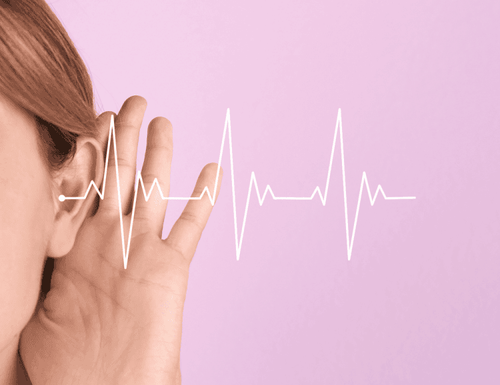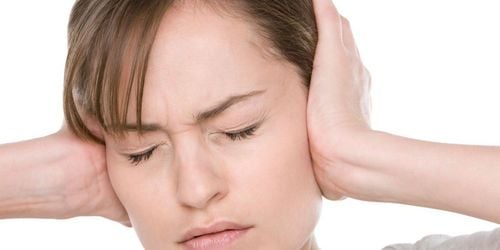This is an automatically translated article.
Hearing has been associated with humans since we were born, but not everyone understands about sounds, how the auditory system works as well as the causes of hearing loss.
1. Working mechanism for headphones
The anatomical structure of the auditory system is extremely complex, but it is divided into two parts, “peripheral” and “central”.
Peripheral auditory system is divided into 3 parts as follows:
Outer ear part: Includes the auricle, ear canal and tympanic membrane. Middle ear: This is a small air cavity, consisting of the malleus, incus, and stirrup. The hammer bone connects to the eardrum, the gateway to the outer ear; the incus is the smallest bone in the body, attached to the inner ear; while the stapes is located in a window, with a membrane to separate the middle ear and the inner cochlea. Inner ear: This part helps the headset to hear sound and keep balance. The organ of hearing is called the cochlea, because of its shell-like shape. The cochlea contains thousands of auditory cells, which are connected to the central auditory system by the auditory nerve. The cochlea contains a special fluid, which is important for hearing function. The central auditory system includes:
The auditory nerve. Subtle complex pathways to the brain stem, progressing to the auditory cortex.
2. How do we hear sounds?
The physiology of hearing, like its anatomy, is extremely complex, so the easiest way to understand is to learn about the role of each part of the auditory system.
Sound waves, which are essentially vibrations in the air around us, are picked up by the ear lobes on either side of the head and poured into the ear canal. These sound waves cause the eardrum to vibrate. The eardrum is extremely sensitive to sound vibrations in the ear canal, it can detect faint sounds, as well as reproduce the most complex sound vibration patterns.
Vibrations of the eardrum caused by sound waves move the hammer, incus, and stirrup in the middle ear to move sound to the inner cochlea. This process takes place thanks to the stirrup bone. When the stirrup vibrates, it causes fluid in the inner cochlea to move in a waveform, activating tiny hair cells.
In particular, hair cells in the cochlea are assigned the task of responding to many different types of sounds, according to frequency and frequency. Trebles stimulate hair cells in the lower part, while bass tones stimulate the upper part of the cochlea. In addition, when each hair cell detects the function it performs, it will generate nerve impulses that travel along the auditory nerve.
These nerve impulses follow a complex route to the brain stem, before reaching their destination, the brain's auditory center (auditory cortex). This is where nerve impulses are "translated" into meaningful sounds. All these processes happen very quickly, as soon as the sound waves enter the ear canal.

Rung động của màng nhĩ do sóng âm dịch chuyển xương búa, xương đe và xương bàn đạp để chuyển động âm thanh.
3. What happens when there is a hearing problem?
Good hearing when the structure of the auditory system coordinates normally, sound can pass through different parts from the ear to the brain without distortion. If there is a problem with a certain part of the ear, hearing will be affected, depending on the location of the damage.
If you have problems in the outer or middle ear, the transmission of sound into the inner cochlea is not effective, making you not hear loud enough. For example, earwax in the ear canal or perforation of the eardrum are conductive hearing loss, because sound vibrations are not successfully conducted. The cochlea is still functioning properly but cannot receive full sound through the connection to the middle ear.
In case the inner cochlea and brain have damage to delicate hair cells, auditory nerve, or malformation of the sound path to the brain, the route through the outer ear and middle ear is still normal, but after sound waves The transmission to the cochlea is not transmitted as normal.
In summary, there are many causes of hearing loss but excessive noise exposure or aging are the two most common. Common symptoms of hearing loss are hearing loss, difficulty understanding language in noisy environments. Therefore, if you notice signs of tinnitus, hearing loss, sudden hearing loss, strange sounds or other abnormalities in the ears, the patient needs to go to a reputable medical facility for advice. , examination and treatment.
Currently, the Otolaryngology Specialist - Vinmec International General Hospital is one of the prestigious addresses, trusted by many customers in the examination and treatment of diseases and congenital malformations in the ear, nose and throat area. with the most optimal internal - surgical methods for patients, both children and adults. Not only has a system of modern facilities and equipment, Vinmec is also a place to gather a team of experienced doctors and doctors who will greatly assist in the diagnosis and early detection of abnormal signs. of the patient's body.
In particular, with a space designed according to 5-star hotel standards, Vinmec guarantees to bring patients the most comfort, friendliness and peace of mind during the examination and treatment at the Hospital.
Please dial HOTLINE for more information or register for an appointment HERE. Download MyVinmec app to make appointments faster and to manage your bookings easily.
Reference source: Hearinglink.org












